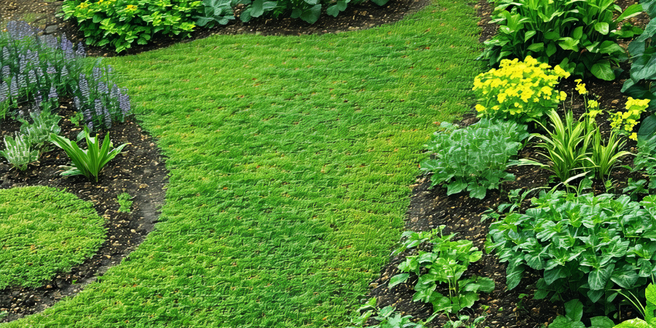
Understanding Soil Composition Basics
Soil composition is fundamental to how well it can retain moisture. Understanding the balance of sand, silt, and clay in your soil is crucial. Sandy soils, with their large particles, drain quickly and hold minimal water. In contrast, clay soils have tiny particles that compact closely, retaining more moisture but hindering drainage. Loamy soils offer the best balance, with a mix of particle sizes that retain moisture while allowing excess water to drain. By testing your soil’s composition, you can better tailor your gardening practices. Improving soil composition may involve adding organic matter to adjust particle size, thereby enhancing moisture retention and providing vital nutrients. This understanding helps create an optimal growth environment that reduces water dependency and promotes plant health by maintaining consistent soil moisture levels.
The Role of Organic Matter in Moisture Retention
Organic matter is a key component of soil that directly impacts its ability to retain moisture. Composed of decomposed plant and animal materials, organic matter improves soil structure, increasing its porosity and capacity to hold water. It acts like a sponge, absorbing water and releasing it slowly, which maintains consistent moisture levels. Moreover, organic matter provides nutrients essential for plant growth, further supporting a healthy ecosystem. By regularly adding compost or well-rotted manure, gardeners can increase the organic content in the soil, thereby enhancing its water retention properties. This practice not only conserves water but also reduces erosion and nutrient runoff. Over time, increasing organic matter in your soil will transform even poor-quality soils into fertile, moisture-rich environments.
Effective Mulching Techniques for Water Conservation
Mulching is a simple yet highly effective technique for water conservation in gardens. By covering soil with a layer of organic material, such as straw, wood chips, or leaf litter, you shield it from direct sunlight, reducing evaporation and maintaining consistent soil temperatures. Mulch acts as a barrier, minimizing water runoff and allowing more moisture to infiltrate into the soil. This process not only conserves water but also suppresses weeds, which compete with plants for moisture. Organic mulches decompose over time, adding nutrients and improving soil structure. To reap these benefits, apply mulch evenly around plants, keeping it a few inches thick. Regular replenishment is essential as mulch breaks down, ensuring continuous protection and contributing to long-term soil health and moisture retention.
Innovative Irrigation Methods for Maximum Efficiency
Leveraging innovative irrigation methods can significantly enhance water efficiency in agriculture and home gardening. Drip irrigation, for example, delivers water directly to the plant base, minimizing evaporation and runoff. This system uses a network of tubing to deliver slow, precise quantities of water, promoting deep root growth and reducing water waste. Similarly, soaker hoses provide an efficient, low-pressure option that seeps water directly into the soil. Meanwhile, employing smart irrigation controllers, which adjust watering based on weather forecasts and soil moisture data, can significantly reduce unnecessary water usage. Collectively, these methods optimize water delivery, ensuring plants receive the moisture they need without excess. By adopting advanced irrigation technologies, you conserve water, reduce costs, and support sustainable gardening practices.
Choosing the Right Plants for Moisture-Rich Soil
Selecting the right plants for moisture-rich soil is essential to maximize growth and reduce water usage. Moisture-loving plants thrive in conditions with consistent soil moisture without frequent watering. Species such as willows, ferns, and astilbes are naturally adapted to wetter environments. Moreover, selecting native plants, accustomed to local rainfall and soil conditions, further enhances garden sustainability. Native plants are often hardier, requiring less intervention and maintenance. Assessing your garden for sunlight exposure and considering plant compatibility also helps in strategic plant placement. Planting moisture-loving plants in lower-lying areas where water collects can take advantage of natural drainage patterns. By choosing plants suited to moisture-rich environments, gardeners can create vibrant, thriving landscapes with reduced reliance on irrigation.
